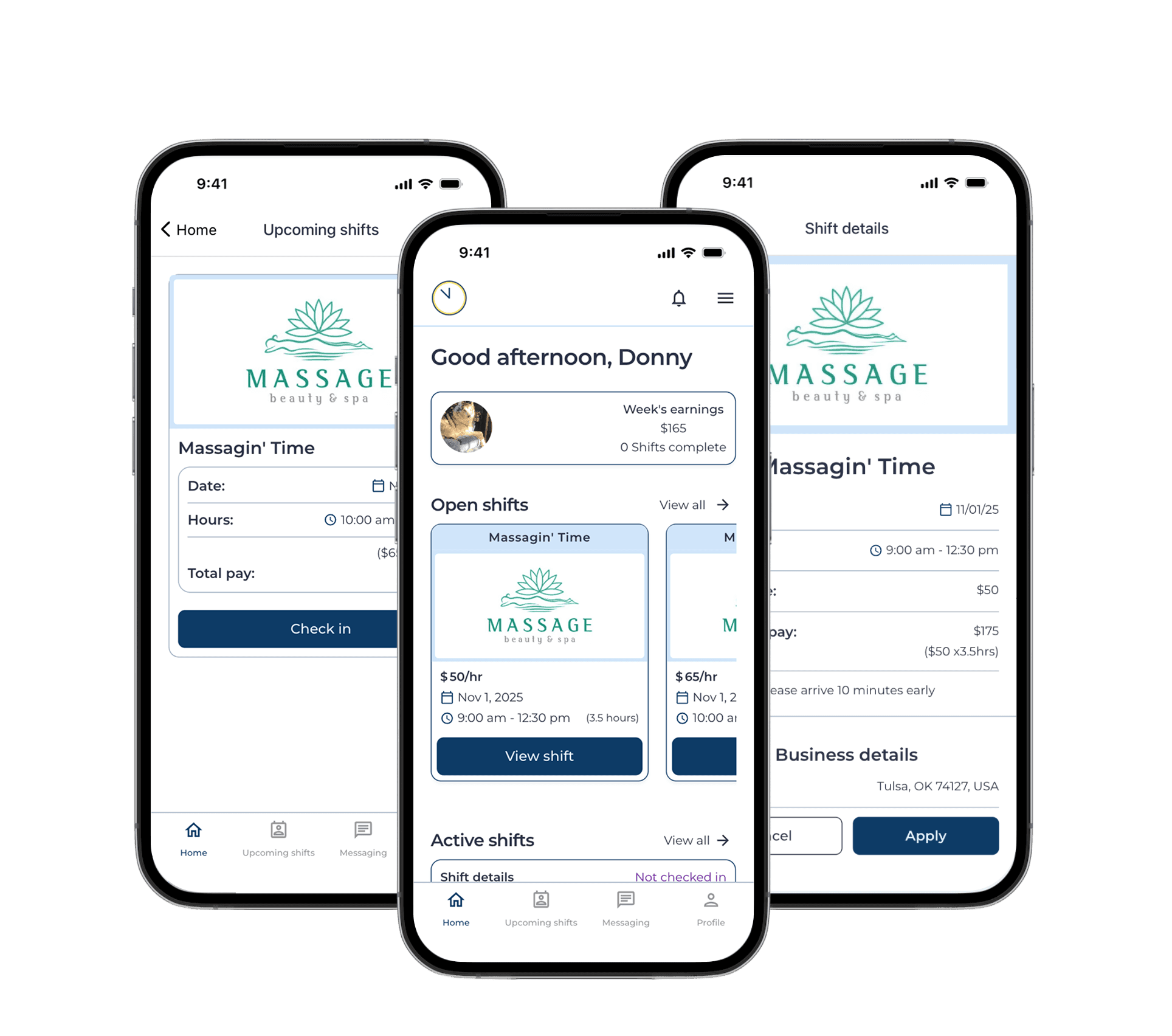Standby Gigs

Problem:
Businesses in the massage industry struggle to fill open shifts quickly when therapists call out, are sick, or on vacation. Most places rely on group texts or scrambling on the fly to fill these gaps, which isn’t reliable. There isn’t a dedicated staffing platform designed for this market, so businesses lose revenue and time when coverage isn’t available.
Solution:
Standby Gigs is a mobile app built for this staffing problem. The platform allows businesses to post available shifts, and therapists can easily browse and pick up work that fits their schedule. I worked as lead designer and product architect, collaborating closely with the founder to take the idea through research, prototyping, and testing. We used a no-code approach so we could iterate quickly and avoid heavy upfront development costs.


Context:
I partnered directly with the startup founder—someone with deep industry experience—to dig into the staffing and scheduling headaches businesses were facing. My role was all things design, product strategy, and user experience. Working with limited resources, we leaned on no-code tools to keep the process fast, flexible, and practical.
Research and discovery:
I started with interviews, surveys, and a look at existing platforms. The feedback was clear:
Businesses wanted one place to post open shifts and find help
Therapists wanted a simpler way to see available work without relying on word of mouth
The big-name platforms out there don’t focus on spa staffing; reviews pointed out pain with customer support and process
I built the insights into user stories and kept the process simple: listen, sketch out ideas, and iterate until the flows made sense for both sides.
Design process:
Initial wireframes were mapped in Figma for fast feedback
User flow diagrams were made in Miro
The UI is mobile-first, using large, readable type (Montserrat), clear colors (navy, yellow, and high-contrast alerts), and spacing in a 4px grid
Everything was tested on actual phones to check accessibility and flow
Each round of feedback was worked directly into the next design update
Key features:
Businesses can post, edit, and manage shifts
Therapists see available shifts, apply, and withdraw easily
Dashboards show applications, current and completed shifts, and earnings
Messaging lets users coordinate directly
All payouts and shift info are linked for clarity
Impact:
The project reached MVP with all the core workflows in place and ready for beta testing. Early testers picked up on how simple the interface was—less scrambling, more visibility. Usability and clear flows drive the experience.
Lessons learned:
Getting user feedback early makes or breaks the product direction
No-code tools like Bubble allow for quick iteration, but you have to keep a close eye on how database logic ties into user experience
Simple questions, honest feedback, and practical testing are what move the needle
Next steps:
We’re starting with beta users to sort out any real-world issues. Key steps:
Refining key flows and fixing pain points
Tracking metrics like user growth, shifts filled, and feedback
Expanding into new business types and regions based on adoption
